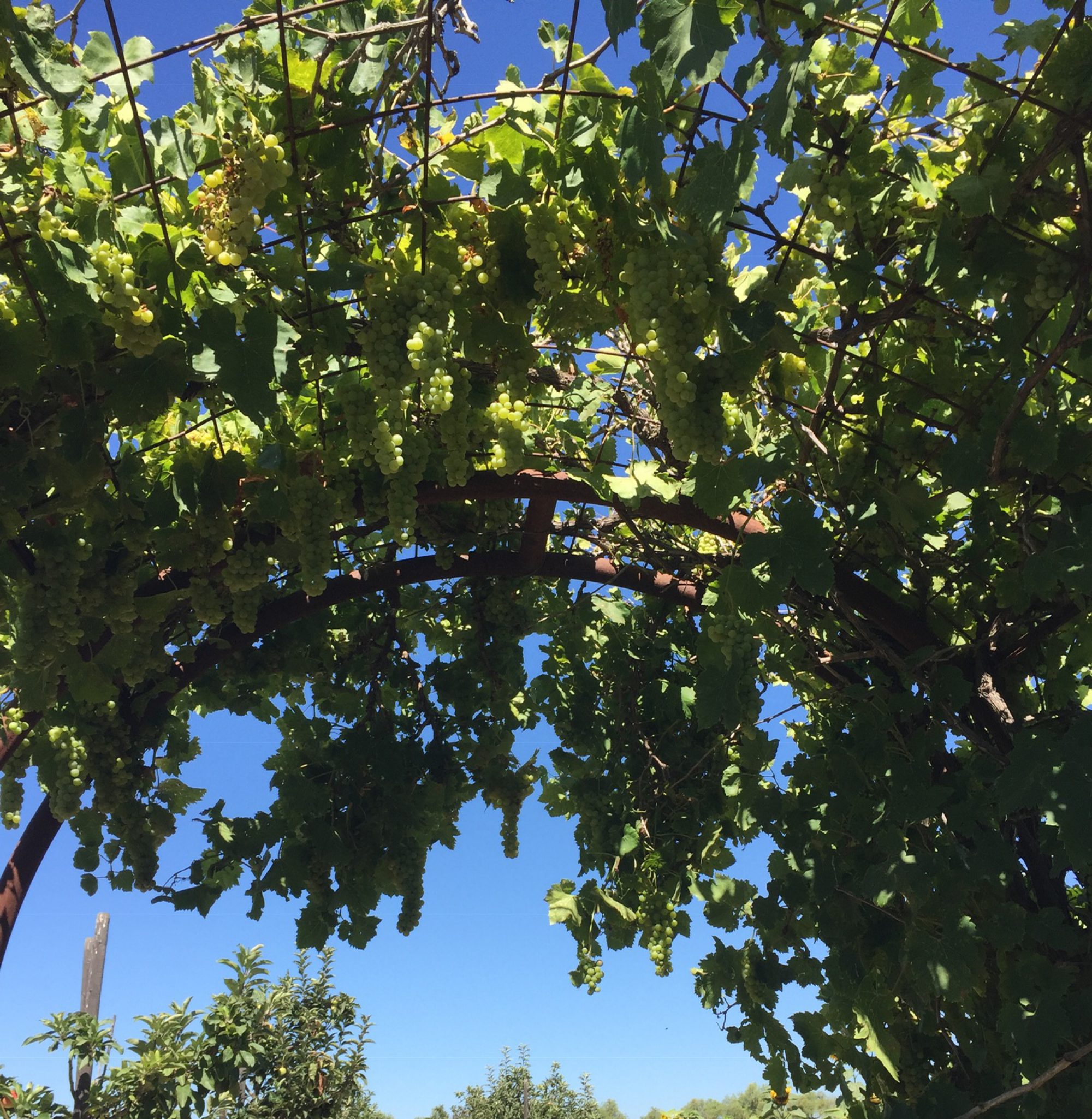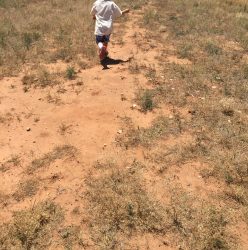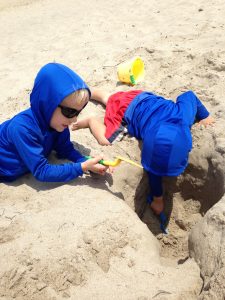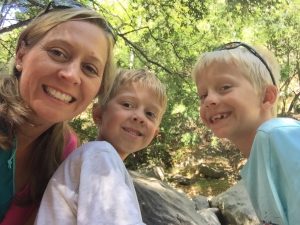 Written by: Summer Belloni, credentialed teacher, mother, and play advocate with International Play Association/USA.
Written by: Summer Belloni, credentialed teacher, mother, and play advocate with International Play Association/USA.
Contributions by: Sarah Graff, Licensed teacher and mom of 2 (age 8 and 11 years) and Caitlin Landry, mother of 3 (age 1, 3, and 5)
Marshmallows, cakes, butterflies, bike jumps, and swimming pools make the perfect curriculum during the Covid19 school closures!
Is it okay to “just” let my children play during the Coronavirus school closures?
Yes!
Lean-in to play and encourage it. Find the balance you need, and if the balance leans toward play, lean-in and go for it! Not so sure about this idea? Read on…
How are you feeling about the schooling right now? Screen school? Homeschool? Crisis school? We’ve heard so many names for this, yet there is no real name for what’s happening in education right now, and that’s okay. Regardless of the term de jour, we know it’s unprecedented and it’s okay to not have all the answers, or even a term to describe this experience. We all respond to the unknown differently, including kids.
Some children are learning on screens, some using workbooks, paper, combinations of both. Some aren’t doing any formal schooling at all. Some children are helping care for siblings and sick family members. Some are volunteering. There is no right answer. We need to do what works for each child or each family to the extent possible.
I’m proposing the idea of adding Play Schooling to our list of options.
Children need play to learn, to process feelings, and to understand the world around them! This is why I’ve decided to lean-in on play to educate my children during the Coronavirus school closures. I hope you’ll consider leaning-in too and embracing play as the free, time tested, research based curriculum for your children! Now is the time to reclaim play as the mantra of learning for elementary school children. Release the pressure valve and lean in to play.
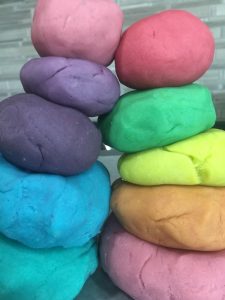
When schools closed for stay home orders across the country, parents took to the internet. We formed groups, we messaged friends, we asked questions, we shared photos, we cried, we celebrated, and we got to work. We got Zoom class codes, Google Classroom tutorials, logins and passwords, lists of free trials, documents of virtual field trips. You name it, we were bombarded with it.
Education technology companies were handing out free trials to everyone like it was cotton candy. “The first taste is free kids, but ask your parents to sign up, wink wink, they can pay later.” To add to the chaos, I started a facebook group to reshare it and repost it. I wanted to help, to feel useful, and to have a place to store all the resources. IT WAS ALL OVERWHELMING.

What I noticed though was a huge number of postings from friends of their children doing ART and PLAYING. My heart was happy. I’m a credentialed teacher and an advocate for learning through play! Children were becoming artists again. Children were painting. Children were learning to ride without training wheels. Children were using real, dangerous tools – saws, hammers, and nails to build things. My friend’s son was so excited to have time with his dad to build a bike ramp! My friend’s daughters were building 2D and 3D shapes with marshmallows. My children were learning astronomy by noticing the constellations at night and wondering why the moon seemed to be moving across the sky in a super slow crawl.
Kids and families were taking to the streets… covering the sidewalks with chalk art! Children were rediscovering old toys in their closets they hadn’t played with in years. Families were putting together puzzles again and playing games. Monopoly was math and bike riding is PE.
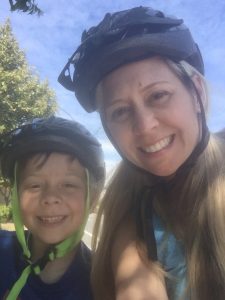 KIDS ARE PLAYING AGAIN. We should encourage play. We should “lean-in” to play. We should embrace this natural way of learning and run with it. It’s completely fine if your kids have to do an hour of screen-school here and there, but for the rest of the day – Let children play! There is overwhelming research to support the power of play in learning. A google search will yield a mountain of studies. For a more in depth look check out, Let the Children Play, by William Doyle and Pasi Sahlberg. This book makes the case for bringing back play and recess to schools and has a comprehensive list of sources to support their recommendations. Debbie Rhea has also written a book titled, Wrong Turns, Right Moves in Education to support play and physical activity in schools as a foundation to academic success.
KIDS ARE PLAYING AGAIN. We should encourage play. We should “lean-in” to play. We should embrace this natural way of learning and run with it. It’s completely fine if your kids have to do an hour of screen-school here and there, but for the rest of the day – Let children play! There is overwhelming research to support the power of play in learning. A google search will yield a mountain of studies. For a more in depth look check out, Let the Children Play, by William Doyle and Pasi Sahlberg. This book makes the case for bringing back play and recess to schools and has a comprehensive list of sources to support their recommendations. Debbie Rhea has also written a book titled, Wrong Turns, Right Moves in Education to support play and physical activity in schools as a foundation to academic success.
If you think play isn’t enough to educate your elementary aged child during this Covid19 school closure, I kindly and humbly ask you to reconsider. Lean-in to play. Experiment. Have fun. Say yes. Try it! It doesn’t mean you have to give up your adult responsibilities or cut off scheduled Zoom calls; just make time to say yes to play, for your child’s education!
Our neighborhood elementary school has been supportive of play lessons during this time as well. They’re actively encouraging art, music, and dancing for kids. Our teachers are encouraging kids-choice reading without regard to levels or testing. Last week one of our teachers had a game set up for kids during their weekly zoom call, just to to bring joy and laughter to our day!
Some parents see kids as “just” playing, and don’t always see the learning and experiences happening that set children up for success in life.
So how is play equal to learning? What do kids learn through play? A lot! Let’s take a look. I’m confident that YOU can come up with more examples in your own homes and I encourage you to do so.
# 1. Chalk Drawing
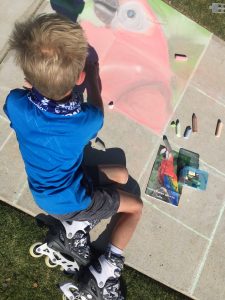
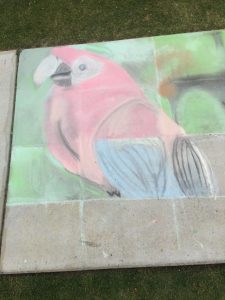
This is a fun activity kids can do outside, individually or with a sibling or family member. As neighbors walk by it also gives kids a chance to practice small talk and interacting with adults and neighbors. First let your child choose a subject to draw, big and colorful is a good idea. Maybe their pet or favorite animal or landscape idea. Print the picture and fold it into a 3×4 grid (or more if you want!). Draw a larger grid on the concrete and outline and color one box at a time.
Content:
Math – Measuring the paper or estimating the size. Dividing it equally. Using a ruler or yardstick to measure equal squares. Estimating/visualizing a straight line.
Calculating how many inches each square will be given the total. Expanding the drawing to a larger space.
Proportions, ratios, fractions, percentages.
Art – Choosing a subject. Color blending. Estimating space constraints. Experimenting with medium – sidewalk chalk or soft pastels? Using your finger to blend. Choosing what other tools to use. Visualization in design. Practicing using supplies appropriately so the chalk doesn’t break.
Other Skills – Curiosity – Feeling the concrete. Wondering why the concrete is gray? What is concrete made of? How hard is this concrete? Do you think I could hammer through this? Why is some concrete smooth or hard? Curiosity could lead to interest in rocks, geology, drying times, mixing and crushing to build, weight and cracking of concrete.
Other Benefits – Enjoying the weather outside. Vitamin D. Focus and concentration, dedication, pride in artistic ability, motivation, self-esteem, work ethic, taking breaks and finishing long projects using multiple sessions. Self / world awareness – aware of outside weather, possible rain, need for sunscreen, getting a shade umbrella, changing sun directions, etc.
#2. Plants and Gardening

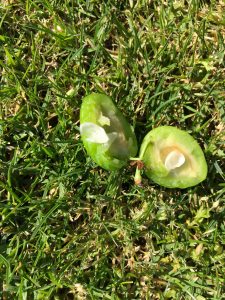
When we moved into our new house, we had a lime tree already growing and decided to plant a plum tree. This is our first year growing plums and it’s been fun watching the leaves grow, the flowers bloom, the bees pollinating them, and seeing the small plums begin to emerge. We can’t wait to taste them – literally we couldn’t wait and the kids wanted to “check” their growth progress… It’s fun watching and checking in on the lime tree too and seeing the itty bitty limes begin to emerge as the flowers fade.
Content:
Science – biology, food supply. Plant life cycle. Pollination. How seasonal and weather changes affect food. Seed exploration, seed growth. Photosynthesis. How flowers help bring forth fruit.
Other Skills – Art – Children can choose a tree or flower and observe then draw what they see each week. They will be recording the changes over time.
Other Benefits or Questions to Ponder – Can I pick this plum? I just want to see what’s inside. Wow it’s sour. This isn’t ripe. Why is this fruit green? Plums are usually purple? Why is this sour? Plums are usually sweet. Where are all the flowers going that used to be on the tree? How does the plant use air, sun, water, and soil to create a fruit? Why are there so many bees on this tree? I see bees in our lemon and lime tree too… what are they doing? Will they hurt me? Ooohh did you smell this flower? It smells so sweet. Maybe that’s why the fruit gets sweet. Hmm. Why does the ripe fruit taste like it has sugar in it but this unripe fruit tastes sour?
As a parent, you don’t need to provide all the answers, but let your child ask questions. You don’t need to research everything. Just let your child experience life around you because one day, maybe in high school or college, your child will learn the answers and have the experiences through play, tasting, picking, smelling, and seeing they’ll rely on that experience to understand the details later. They’ll remember what they tasted, smelled, picked, touched, opened, and wondered. Let them have the experience. You don’t need to give the answers.
# 3. Pool Fun
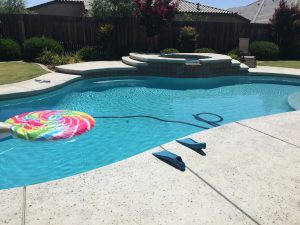
Having access to a backyard pool can be fun and memorable. Maybe you’re lucky enough to have a built in pool, but if not you may have space to buy a variety of different types and sizes of pools from a local big box store or pool supply store in your neighborhood.
Content:
Creativity, Safety Skills, and Physical Activity – Kids make up fun games when they are left to play in the pool without much adult authority. Of course proper supervision and safety rules are still needed, but kids can become very creative when enjoying the water.
Other Skills – Creativity, strategy, communication and negotiation for games, new games, or changing games, working out problems and disagreements, compromising and agreeing. Kids can also practice taking turns and sharing equipment.
Other Benefits – Time outside is a great time to practice appropriate life skills such as cleaning up after oneself, putting on appropriate sunscreen, taking adequate breaks, staying hydrated, and more.
# 4. Bike Jumping
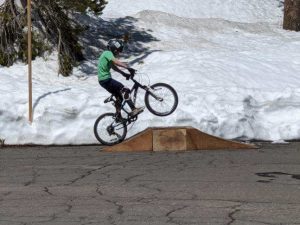

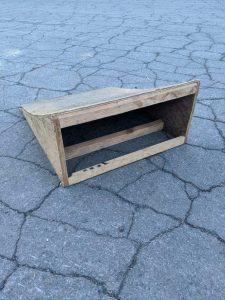
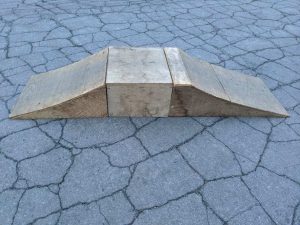
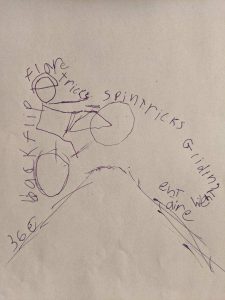
Playing outside has been critical to everyone’s sanity during COVID19. Finding activities for children to do solo can be a challenge. Biking in front of the house only entertains for so long, which is why bike jumping became our son’s obsession. It started with him gathering wood scraps and nailing the pieces together, but it didn’t achieve what he had envisioned. After discussing his idea with Dad, a lesson in physics and carpentry followed and a real bike ramp was created. There were discussions about how tall to make the jump, how wide the boards should be as well as the actual construction of the ramp. The father-son teamwork was priceless, certainly something neither will soon forget.
Once one bike jump was made, naturally more followed. A month later, there are now three ramps, of different sizes and shapes, but they fit together to create a jump that can be hit from either side with a platform in the middle.
Other materials were used to create other jumps: snow, dirt and gravel. In addition to the construction of the ramps, four different size bikes were tested and retested to see which one went the highest, the furthest and could do the most tricks. When bikes grew tiresome, scooters were brought into the mix. Again, different sizes were tested and new tricks were discovered.
Another benefit to this project was understanding the weather conditions and how it would impact the landings of the jumps. What changes would the rider need to make for a wet surface? A snowy surface? An area with lots of loose gravel? During a snowstorm, we told our son he couldn’t ride because the roads were covered in many inches of snow. His solution, clear a space large enough to bike jump. He was shoveling the road for over an hour and then happily jumped for the rest of the afternoon!
Content: Visualization, Physics, motion, force, distance, angles, speed, carpentry, exercise, writing
Other Skills: When one part of the ramp broke, he found the right tools and screwed it back together, with no parental help. He understood which tools to use, which screws he needed and how to fix the broken pieces.
Other Benefits: The confidence our son has gained through this experience is truly remarkable. All his required writing has revolved around this experience which has made that aspect even more special. Writing is not our son’s favorite subject, so watching him write page after page about bike jumping and creating poetry of all shapes and sizes was truly amazing. In addition, his ability to think outside the box has improved. He added a board to the bottom of his scooter so that he could grind on the ramps. This new found interest has become a passion, he is constantly thinking about how to improve his ramps, jump higher and fly further.
# 5. Baking
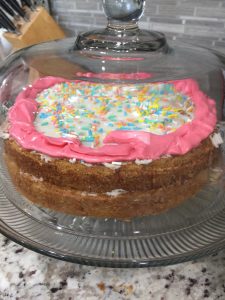
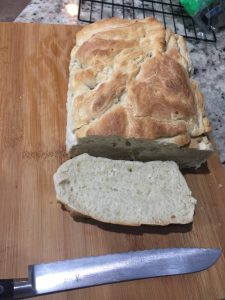
Who doesn’t love sugar, carbs, and delicious warm bread? Why not let the kids have a try in the kitchen! The kitchen provides ample opportunity for math, science, reading, and more.
Content:
Reading: Expository (information) text reading, step by step instructions.
Math: Fractions, unit conversations, measuring, multiplication/division, temperature.
Science: Understanding how yeast works. Matter changing state when heat is applied. Mixing items to create something new entirely.
Other Skills:Patience in working with yeast and understanding how it works. Patience in letting the dough rise. If the recipe isn’t followed the recipe fails.
Other Benefits: Safety skills in the kitchen, using mixing tools, using the oven and sharp objects, cleaning up after ourselves, learning how to make food for family and friends, pride and satisfaction.
Questions to ponder:
What is yeast anyway? How does a living thing survive in a paper pouch for years anyway? How does adding heat to a solid change its state? How does the dough get so big anyway?
Why is it that when you mix water and powdered sugar it hardens? Can I add anything to make it spread better? What does the oil do and will it mix with the water? Plus metal conducts heat so be careful and don’t burn those hands… what else conducts heat? Why can I use these padded gloves and protect my hands? Hmmm… nerves you said? What are nerves? How is it that my nerves send a signal from my hands to my brain when I touch the metal pan? So many questions.
Let them have the experience. You don’t need to give the answers.
# 6. Building a Garden Space
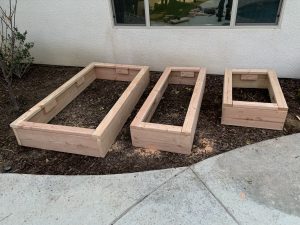
This play may require some adult help. Building garden boxes can be a fun activity for parents and kids to do together that will provide for years of fun harvesting. If the wood isn’t perfect, no problem, if kids mess up and send a screw in sideways this is very forgiving and the plants won’t mind a bit. If you and your child are creative it would be fun to paint the boxes or add some personal touches.
Content: Math. Oh my goodness can we talk about math here? Area. Perimeter. Volume.
How much space do we have? How much wood do we have? How tall can we make them? How tall do the plants grow? How much soil do we need? How much does soil cost?
Science/Astronomy– How many hours a day do the plants need? How much sun does this area get? Will the sun direction change much from spring to summer and will it affect what vegetables grow?
Science/Climate – What plants do we want? How fast do they grow? What grows good next to each other or what should we avoid being by each other. What climate zone are we in for planting? Let’s experiment! Do we want to see what grows best then learn from our mistakes and successes then change something in the middle of the season; or for next year?
Other learning benefits – How do we keep neighborhood cats from using this as a litter box? How will we route the sprinklers to help water for us? Opportunities to learn about irrigation for older kids.
#7. Mallow Math
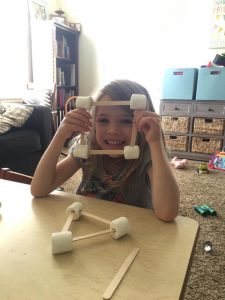
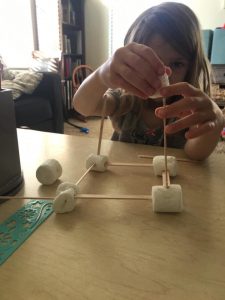
This sweet girl enjoys a sweet treat as she plays. She’s building 2D and 3 D shapes with marshmallows – and sharing with her little sister and brother too! This can be done with marshmallows and popsicle sticks, or playdough and toothpicks! Another fun way to include science is to build constellations.
Content:
Math – Kids can build 2D and 3D Shapes. It’s even fun to put multiple shapes together to build a larger object. Some ideas to extend this project for older kids is to focus on measurement, area, perimeter, and volume. Kids can identify parts of objects using specific vocabulary such as edge, face, and vertex/vertices.
Language/Vocabulary – Kids can build triangles, quadrilaterals, pentagons, hexagons, octagons, and more, even extending their vocabulary into prefixes.
Children can have fun showing right angles, obtuse, acute, and straight angles. They can count their parallel and perpendicular lines.
Design, Planning, Estimating, Art, Creativity – For kids who wanted a challenge they could take paper and fold/cut them to design 3D shapes (geometric nets) and design an imaginary city or a replica of their neighborhood.
Science – Astronomy. Kids can build constellations. Use this to learn about what constellations are in your night’s sky during this season and how the constellations move over the year.
Other benefits: Fun! Great for fine motor skills for younger kids and visualization/problem solving. Depending on how a child decided to play with this it could easily lead to some engineering ideas as well – what shape is best to build something, to hold weight, and what shape is least likely to collapse under weight, etc.
Kids don’t need to build or create everything mentioned. Let them play and have fun. This will give them the experience they’ll need when they learn about more complex math ideas.
#8. Caterpillars and Butterflies
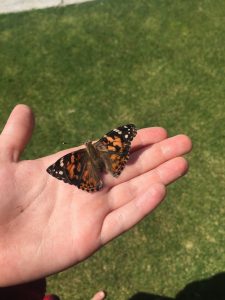
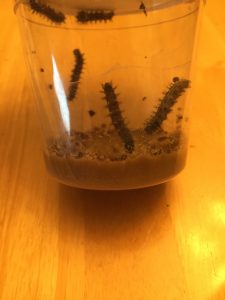
It’s fun to watch these baby caterpillars eat their food, grow SO much bigger, build their own chrysalis, then emerge as a beautiful butterfly! This is just pure fun and excitement. How can an animal that can only crawl on the ground change and grow into an animal that flies? This kit (www.insectlore.com) comes with a daily observation journal, coloring pages, and more. This activity lasts approximately 25 days and it’s something to look forward to seeing the changes and growing each day. During the cycle we even found a caterpillar on our garden lettuce and saved it in a jar. It made its own chrysalis. We did research to find out it is a common “Cabbage Looper” caterpillar. We put it in our net, it made a chrysalis and emerged as a moth. So many questions and a greater appreciation for tiny caterpillars – even if we have to pick them out of our garden! Let them have the experience. You don’t need to give the answers.
You might even have a little artist inspired by the Painted Lady Butterflies or searching for more caterpillars in your own backyard.
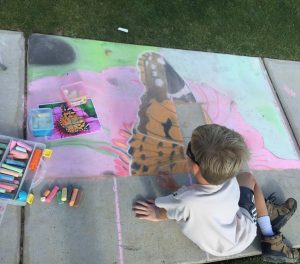
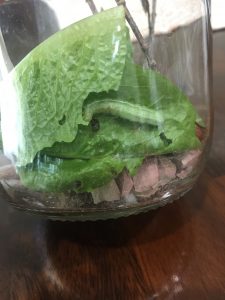
# 9. Brick Building
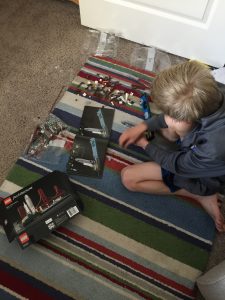
Each afternoon we do “break time.” This is a time each kid goes into their room for an hour and takes a break. A break from their brother, a break for me, and a break from screens. Kids can bring in toys, books, anything to do, just not screens.
Content: Engineering Building. Kits allow children to follow step by step instructions, reading comprehension, and visualization of space. Being able to visualize and imagine is an important component to engineering design and being able to model 2D and 3D renderings in the future.
Other Important Skills:
Free play with bricks allows kids to design their own ideas and bring them to life. Quiet time allows the brain to reset and refocus.
Other benefits: This specific build piqued my son’s curiosity about the San Francisco skyline and he was curious what the island in the middle of the SF Bay was. From this curiosity he researched the area, read in depth on Alcatraz, why it was built, and what is its purpose now. We’ve added it to our list of places to tour next time we head to the Bay Area! He enjoyed reading and learning about it and teaching us bits and pieces. This build led to the discovery of the historical fiction book, Al Capone Does My Shirt, which he is considering reading now.
Again, it’s about providing time and space for kids to experiment and play.
# 10. Board Games
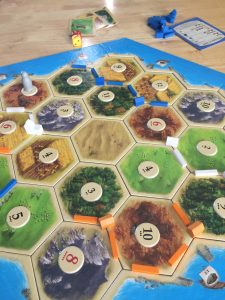
Good ol’ fashioned board games are a fun way for the whole family to play together! Learning is embedded into most games.
Content – Content varies widely depending on what game is being played. Monopoly has a lot of math, specifically financial math built in. Of course if kids are the banker they’ll gain practice adding and subtracting large numbers. Turning in money for smaller bills is really a form of regrouping. Counting, adding, subtracting, regrouping, and more. Mortgage, loans, buying, selling, and rent collection skills. Younger kids can play with help from a parent or older sibling focusing on colors and counting.
The game of Catan, shown in the photo, exposes kids to the ideas of natural resources, trade harbors, building roads and cities and so much more.
Other skills – Economics and strategy. Reading and following directions. Decision making.
Other benefits – Communication, fun with family, and more.
#11. Construction
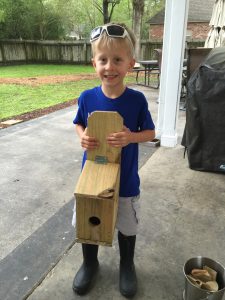
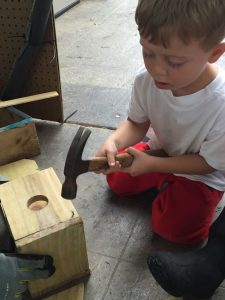
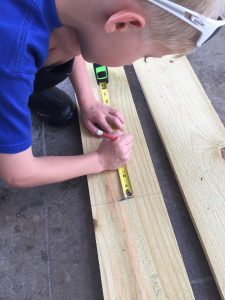
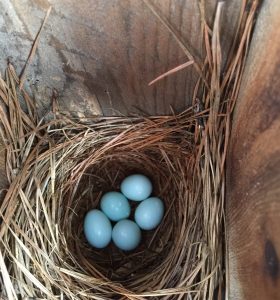
Bird houses for spring could make a great play learning experience for kids and encourages them to work together from the original design concept, drawing, and building. Birds don’t need perfectly squared and painted houses so there is room for imperfection and that’s okay.
Content: Reading, researching, designing (sketching), writing directions, following directions, measuring, calculating lengths.
Other important skills: researching and understanding what birds live in your neighborhood, what type of nest do they prefer, how tall do they prefer their house off the ground?
Other benefits: pride in finishing a job well done, knowing you’re helping local bird populations, patience and giving yourself understanding if it’s not perfect, trial and error, redesigning and trying again, cooperation, sharing, and more!
*We did this project a few years ago, not during this current Covid school closures. Since it’s currently spring, I thought a birdhouse might inspire your little builder as well. We built this bird house out using 1 fence board we had from a previous building project.
#12. Designing Parachutes
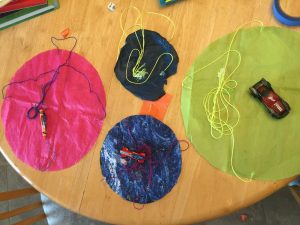
This project was a mix of engineering, creativity, and resourcefulness. My son was left on his own while we worked on taxes. We came out of a two hour working session to find him fashioning a parachute with tissue paper, string, hot glue gun, and different toys he’d found. He wanted to launch it off the table and see if it would float. There was failure, some modifying of the design, retesting, and redesign, and retesting again. My son determined his best model was the large parachute, same length embroidery strings, and a crayon. Later the following day he modified again.
Content:
Math – symmetry, measuring
Engineering – materials choice, design, trial, redo, retest.
Science – aerodynamics, motion, wind resistance, weight distribution and more.
Other Important Skills: Fine motor skills to cut circles, using a hot glue gun (ouch!),
Other benefits: working toward a goal, creativity, using resources commonly available, failing and retrying, pride in work.
Let kids experiment and ask questions. We don’t have to give all the answers. Opportunities for play and creativity will spark curiosity. Their experience will give the foundation to rely on as they get older and begin to develop research skills to answer their own questions.
# 13. Gross Science
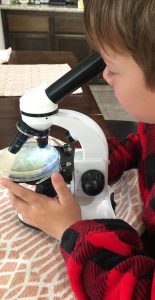

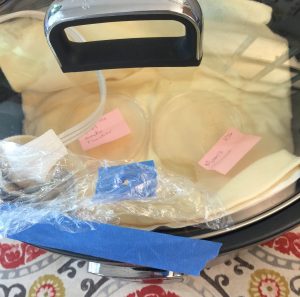
Our family already had a kids microscope the kids had received as a birthday gift a while back. This year we purchased petri dishes on Amazon in a science kit and swabbed different areas around the house and our mouth and hands. We fashioned an incubator from a crock pot and a heating pad and attempted some home grown science. It worked! Gross makes for the best fun.
Content:
Science – biomedical curiosity, germ science
Other benefits – patience in waiting several days to see any changes, learning how to use a microscope, learning how to collect a sterile sample, maintaining a temperature environment, and learning about germs in our environment. This is a great way to see visually the germs around your house, on your hands, or in your mouth.
# 14. Reading for Fun

Reading gives kids a place to go when there is nowhere to go. Taking a break from active play can mean sitting or lounging with a good book of your choice. Kids can be free to choose a book of their own interest without regard to reading level, genre, book report, quizzes, or testing during this time. Our family purchased a Kindle recently and it’s been well loved the last few weeks. This has allowed our kids the chance to choose a book and read during a time convenient for them. Kids have time to read for hours if they choose and may even decide to pursue reading a new series or collection from a new favorite author. Often time in classrooms can be distracting, loud, or reading time is cut short. The light weightness of this device means children’s small hands don’t have to be burned with holding large, heavy books they otherwise might have a hard time holding for long stretches with smaller finger muscles.
Content: Reading/Literacy – vocabulary, comprehension, visualization, story structure, and so much more. Extended periods of reading can also provide kids with a plethora of examples of sentence structure that will help contribute to improved writing and spelling for them personally.
Other skills – The more kids read, the better readers they become – this will help in all subject areas.
Other benefits – Having the time to read for long periods builds reading stamina. Choosing books on their own provides motivation to read more in their preferred genre, subject area, etc. Reading also gives kids a mental break from physical activity or screen stimulation. Giving kids time and opportunity to rest their bodies is an important lifelong skill – reset is good for all of us! Kids reading also opens up opportunities for parents to discuss what’s happening in the book and can open the door for further communications.
Your family may be enjoying this time at home together or it may be difficult for you. Whether you are struggling or thriving, one thing we know about children is that play helps children learn, thrive, grow, and process their world around them. Play is a great way for children to regulate their emotions and behaviors. To the extent it’s safe during the time of social distancing, children can enjoy their backyards, neighborhoods, or back balconies.
Whether it’s board games or building with boards, learning never stops for kids just because they aren’t in their seat. Kids thrive in the natural world. Kids thrive when they play. Play is joyful and free. Play doesn’t require a computer or login. Play doesn’t require a free trial or a keyboard.
Parents and caregivers, I hope you feel empowered and inspired to use play as the foundation to your child’s learning for the next month, or more! Remember, you are enough. Play is Free. Play is research based. Play is Critical. Play is Learning.
I would love to see what your child is playlearning right now!
Special thank you for contributions from Sarah Graff and Caitlin Landry. Sarah is the mother of two kids and teaches 7th grade History, Language Arts, and AVID. Sarah’s son is having the fun building his bike jump leaning in to what he loves – building and playing. Caitlin is the mother of three kids in elementary and preschool. Caitlin’s children are enjoying mallow math fun and so much more she’s doing with them everyday to play with them so they can learn. Lastly, special thanks to my son, Derek, for letting me guest post this article on his web site!
If you’re looking for more support, research, and encouragement to lean in to play right now check out the International Play Association. IPA recognizes playing as a basic and vital part of the pleasure of childhood. During times of crisis, play has a significant therapeutic role helping children recover a sense of normality and joy.
Because there is a heightened need to support children’s play at this time, International Play Association recently released a PDF, titled “IPA Play in Crisis: Support for Parents and Carers Resources” with support for parents and carers so you can support your child’s play, including how to respond to children’s play needs in times of crisis.
